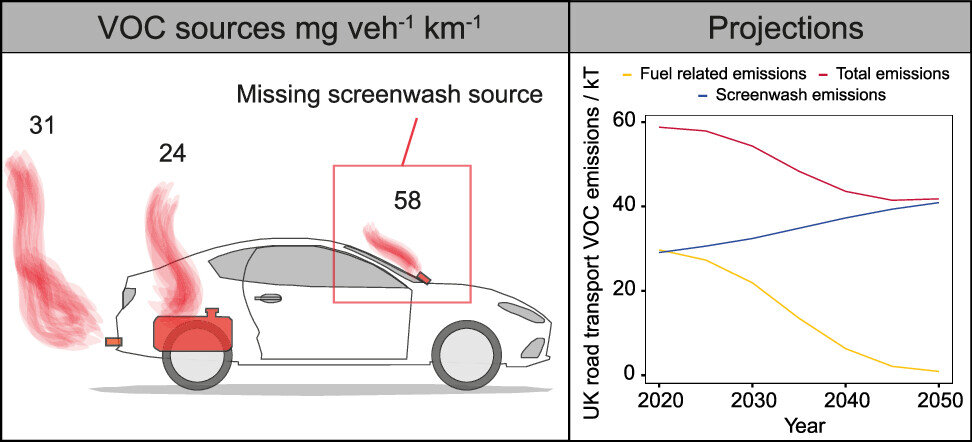Vehicle emissions have long been a concern for environmentalists and policymakers. While most people associate vehicle emissions with exhaust fumes, a recent study published in Environmental Science & Technology reveals that there is another source of pollutants that is often overlooked – windshield washer fluid.
According to the study, the alcohols present in windshield washer fluid account for a larger fraction of real-world vehicle emissions than previously estimated. The study also suggests that the levels of these non-fuel-derived gases will likely remain unchanged, even as more drivers transition from gas-powered to electric vehicles.
While carbon dioxide emissions have dropped by 25% since the early 2000s, volatile organic compounds (VOCs) continue to pose a significant threat to the environment. VOCs are a broad classification of carbon-based molecules that are easily vaporized and can contribute to ozone formation. While some VOCs are released in exhaust, others may arise from the products used for “car care,” such as windshield washer fluid.
According to a national inventory of manufacturer statistics in the U.K., car-care products could be an even greater source of VOCs than exhaust, but these numbers had never been verified experimentally. To address this knowledge gap, Samuel Cliff and his team decided to measure the amounts of vaporized windshield washer fluid ingredients from cars on a real-world road and compare it to the inventory estimates.
The researchers outfitted a van with several instruments, including a mass spectrometer, and parked it near a busy roadway to measure the VOCs actually emitted by vehicles. By comparing the van’s measurements with those from a university site with minimal traffic influence, they calculated the average amount of vapor given off per car for each kilometer traveled for several key VOCs.
The measured values matched inventory estimates for aromatic compounds that are commonly monitored and regulated, but those for alcohols, key ingredients in windshield washer fluid, far exceeded inventory numbers. In fact, the release of two alcohols, ethanol and methanol, was nearly twice the amount of all VOCs released in exhaust.
The discrepancy in alcohol emissions could be accounted for by including solvents from car-care products in the inventory estimations, suggesting that these products are a significant, if unexpected, source of vehicle-derived pollutants. This finding has implications for future regulatory policy, especially as drivers transition to electric vehicles, which may have fewer emissions from fuels but will still need clean windshields.
The study reveals that windshield washer fluid is a major source of vehicle emissions, and alcohols present in these fluids contribute more to pollution than previously thought. As policymakers and automakers continue to work towards reducing emissions, it is important to consider all sources of pollutants, including those that may be overlooked.


Leave a Reply